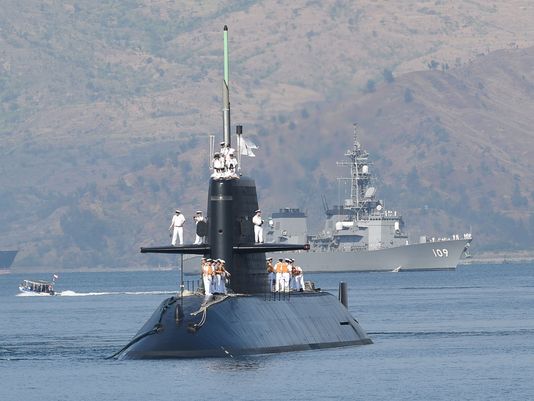Ashton B. Carter, Defense Secretary, is in a visit to Asia this week and planning to stopover in India and in Philippines to strengthen bonds that could serve USA in hard times. Mainly the talk has focused on the South China Sea, where tensions remain high as China has deployed surface-to-air missiles and other equipment and several countries have made conflicting territorial claims.
Moreover, security concerns about the South China Sea often focus on the ships that cross it, including in so-called freedom of navigation operations run by the U.S. Navy and recent efforts by Chinese fishermen and coast guard units to take control of the lucrative fishing business in the region.
The top officer of the U.S. Pacific Fleet, Adm. Scott Swift, said during an interview that submarines are a “critically valuable asset” to him. He stated that it gives him much more open access to areas that would be more contested in a conflict for surface units, for instance, or air units. The United States, China, India, Vietnam, Indonesia, Malaysia and Australia are all among the countries looking for ways to upgrade submarine operations in coming years.
Swift said it’s in part a “reflection of the angst” in the theater with respect to not just China, but others as well.
“It’s certainly centralized in the minds of many in the South China Sea, but we see it more broadly and certainly in the East China Sea and elsewhere,” Swift said.
Carter said last week while previewing his trip to Asia at the Council on Foreign Relations in New York that they’re investing over $8 billion just next year to ensure that theirs is the most lethal and most advanced undersea and anti-submarine force in the world. “That includes new undersea drones in multiple sizes and diverse payloads that can, importantly, operate in shallow water, where manned submarines can’t.”
The Pentagon estimates to spend about $97 billion in coming years on what it calls the Ohio-class replacement program, phasing out 14 existing nuclear missile submarines with a new generation of vessels that includes 12 more. Additionally, it has been buying a new generation of attack submarine called the Virginia class since 1998, phasing out old attack subs in its Los Angeles and Seawolf classes while also investigating how it can expand operations with unmanned submarines.
China deployed its first nuclear-powered ballistic missile submarine in December, the JIN-class, adding a vessel that could carry sea-based nuclear missiles for the first time. Also, China deployed attack submarines to the Indian Ocean for the first time in 2014, seemingly to support counter-piracy operations but more realistically to gain familiarity with the region and to demonstrate an emerging capability, according to the Pentagon’s annual report on China military operations released last year.
The director of the Defense Intelligence Agency Marine Lt. Gen. Vincent Stewart, predicted in testimony before the Senate Armed Services Committee in March that China’s People’s Liberation Army (PLA) is likely to continue adding more military equipment in the South China Sea.
According to Stewart China’s vocal opposition to freedom of navigation operations by the U.S. Navy in the South China Sea demonstrates “that Beijing recognizes the need to defend these outposts and is prepared to respond to any military operations near them.”
Noting that freedom of navigation operations happen when the Navy sends a ship, commonly a destroyer, through a region in which a country such as China has made maritime claims that the United States considers excessive.
U.S sees the operations legal through the right of innocent passage, in which a ship travels through a territorial sea while meeting a series of restrictions outlined by the U.N. Convention on the Law of the Sea. The restrictions include using weapons of any kind, launching or landing aircraft, or interfering in any way with the communications of a coastal state nearby.
